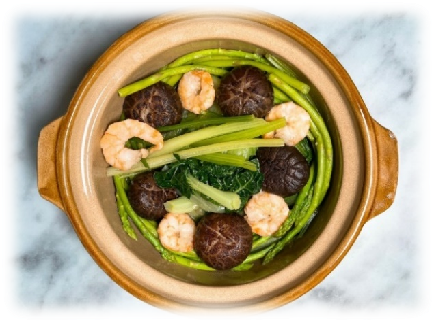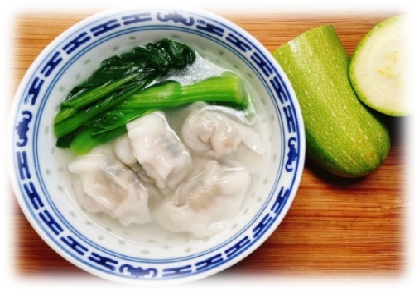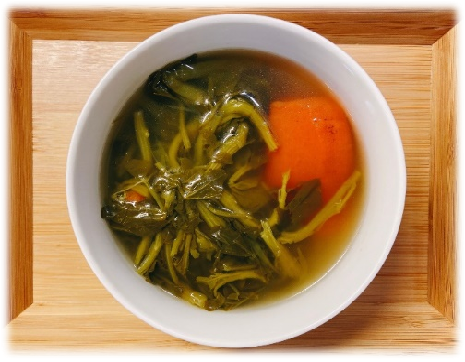Healthy Dishes for Different Seasons
Seasonal food can make our diet more nutritious and balanced. It also enables us to enjoy the food at its best.
Practical Tips to Prepare Seasonal Dishes
1. Use both seasonal foods and foods available all year round.
Foods Available All Year Round:
- Vegetables: e.g. lettuce, broccoli
- Meat and egg: e.g. pork, beef, chicken, egg
- Fish: e.g. golden thread, carp
- Bean and bean products: e.g. black-eyed peas, tofu (bean curd)
- Nuts: e.g. cashew, walnut
- Dried foods: e.g. black fungus, mushroom
|
Seasonal Foods in Spring:
Sample Dish in Spring: Shrimp and Mixed Spring Vegetables Casserole |

|
|
Seasonal Foods in Summer:
Sample Dish in Summer: Dumplings with Zucchini, Lean Meat and Oats |

|
|
Seasonal Foods in Autumn:
Sample Dish in Autumn: Braised Pork with Carrot and Lotus Root |

|
|
Seasonal Foods in Winter:
Sample Dish in Winter: Watercress, Carrot, Monkfruit and Lean Pork Soup |

|
2. Add colour and variation to the dishes
- Combination of natural colours of foods, such as green, purple, red, yellow, white, and black, adds appeal to dishes. Here are some examples:
- Beige + Green + black: Chicken fillets with sugar snap peas, black fungus, and onions
- Red + yellow + beige: Beef slices with mango and enoki mushrooms
- Purple + red: Eggplant and red pepper with minced pork
- Adding vegetables and fruits to the dishes does not only make the dishes more delicious and attractive, it also helps in the prevention of chronic diseases. Phytonutrients in vegetables and fruits include beta-carotene in carrot, lycopene in tomato, watermelon, and papaya, and lutein in green leafy vegetables, which can help to boost the immune system and offer protection against diseases, such as colorectal cancer and heart diseases.
- Cutting the food into different shapes and sizes, such as pieces, slices, cubes, strips or mincing it makes eating easier. It also enhances the permeability of seasoning and heat to get into the foods.
3. Make use of natural flavours and aroma
- The natural flavours of some vegetables, such as celery, mushroom, turnip, and onion and fruit, such as peach, apple, banana, orange, lemon, and lime, can help to make the dishes more appetizing.
- Try seasoning with lemon juice, herbs, and spices, such as ginger, green onions, parsley, garlic, and pepper. Cut down on preserved food and high-salt condiments like salted fish, salted egg, preserved vegetables, miso paste, fermented red bean curd, and shrimp paste.
4. Buy appropriate portions
- Eat the appropriate amount of different foods according to the recommendation of the Healthy Eating Food Pyramid and have variety in food choices.
- For certain foods, such as vegetables, poultry, and whole fish which include parts that are inedible, like root, bone and fat, the amount bought would need to be greater.
5. Adopt healthy cooking methods
- Limit high-fat ingredients like fatty meat, bean curd puff, and deep-fried wheat gluten. Remove fat and skin from meat and poultry before cooking.
- Use low-fat cooking methods like steaming, simmering, stewing, baking, and boiling or use a non-stick frying pan and microwave oven for cooking.
- For elderly with chewing difficulties, use soft food as ingredients, cut them into smaller pieces, and cook until the food is soft in texture.
Choice of Food for Different Seasons
- Hot weather in summer may affect the appetite of the elderly and hence lead to weight loss. Choose foods that are soft and high in water content like rice noodle in soup, squash, fish fillet, and tofu (bean curd). Dishes with different colours are more appealing and appetizing.
- Keeping the body warm by consuming fatty foods in winter time is a common myth among the elderly. The best way to keep warm is to maintain a healthy weight and to follow the Healthy Eating Food Pyramid with a balanced diet and the right proportions of different food groups.